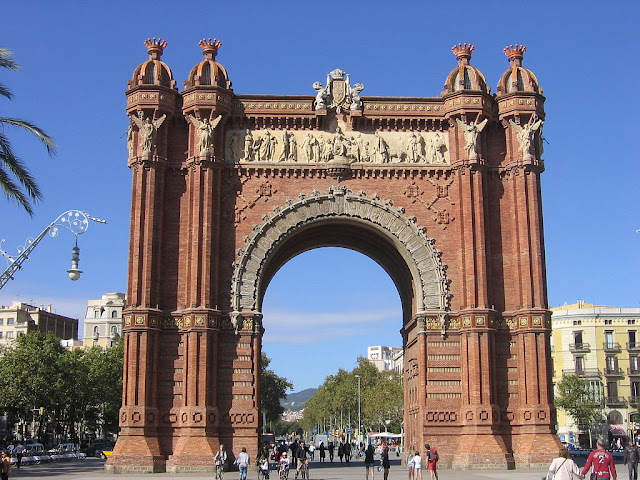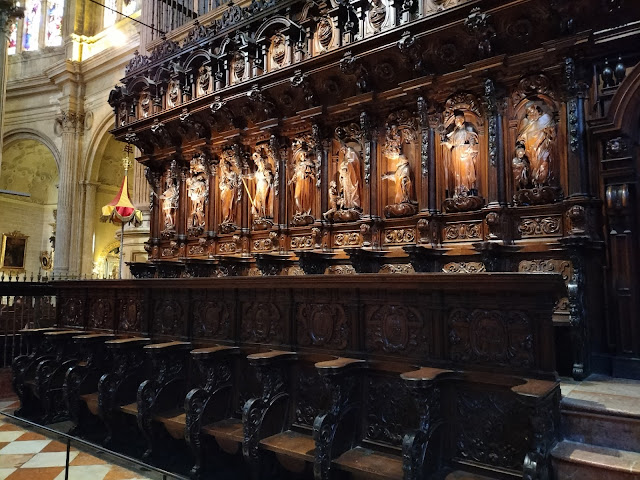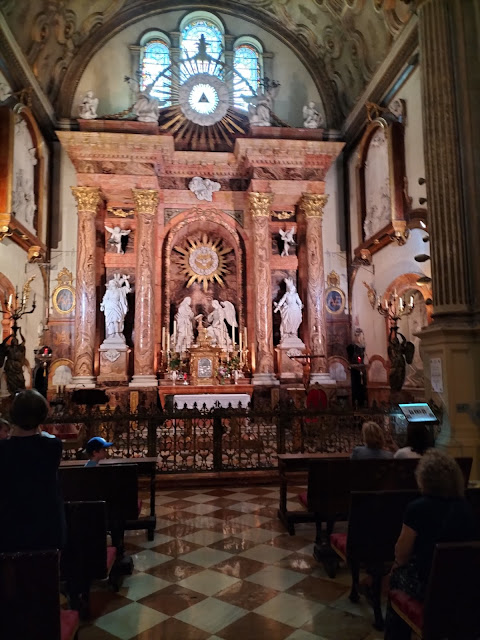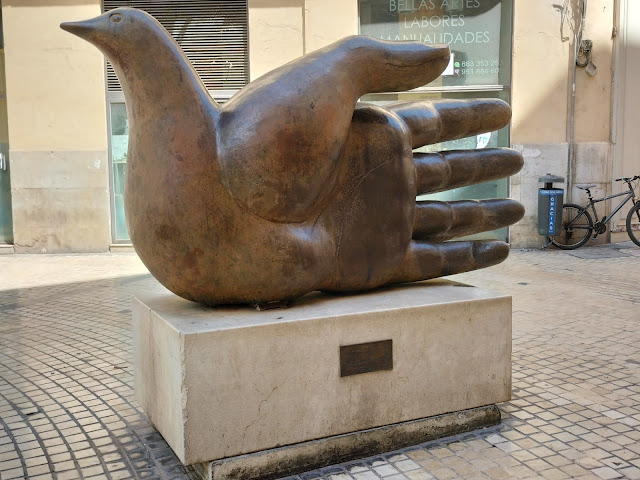On our first full day in Barcelona we sat on the top deck of the City Tour (hop-on, hop-off) bus whilst navigating this huge city, with the wind in our hair and blue skies above. The city is known for its architecture, and none so renown as that of Antoni Gaudi, the greatest representative of Catalan modernism, who lived from 1852 to 1926. There is no evidence that the word gaudy came from Gaudi, but it seems a coincidence...
I'm a writer, a reader and a traveller. This blog follows my search for knowledge and my thoughts about this voyage we call life. Whether I read about it, or experience it, life is never dull! (This blog is the continuation of creativepenny.blogspot.com.au).
Wednesday, 10 May 2023
Swinging around Spain
The Pedrera, a UNESCO World Heritage site and Gaudi's last civil work. The facade is an 'architectural sculpture'
Columbus Monument, 60 metres high
Casa Battlo, another of Gaudi's works
Formerly the city's bullfighting ring, the Arenas de Barcelona, was converted in 2011
to a shopping, commercial, leisure and cultural centre. The last bullfight took place here in 1977.
Museu Nacional d'Art de Catalunya (National Museum of Art)
was built during the International Exhibition of 1929
Placa d'Espanya was also built during the International Exhibition of 1929
Arc de Triomf, was built as the main entrance to the Universal Exhibition of 1888
and in modern times has been used as the finish line for some important foot races in Barcelona
The next day we joined a small group tour and saw more of the city including the 'old town' of Barcelona with its myriad narrow alleyways full of interesting shops, art galleries and museums. We also drove up to Parc de Montjuic, the highest point of the city which afforded us fabulous views.
The 'Old Town' of Barcelona dates back to the 14th Century and contains myriad narrow alleyways filled with shops, museums, art galleries and churches.
Gaudi's La Sagrada Familia is the largest unfinished Catholic church in the world, having been under construction since 1882. Completion is expected by 2026, the 100th anniversary of Gaudi's death.
Our boutique hotel was old, but the interior had been renovated to modern style, except for the lift!
We boarded the Celebrity Infinity for our nine-night cruise around Spain to Portugal and our first stop was Mallorca (Majorca), where Australian fugitive Christopher Skase was holed up for 10 years. We spent the morning touring around Palma, the capital, and visited the Bellver Castle which afforded fantastic views of the city. We then walked through the city past the magnificent Palma Cathedral, the third tallest in the world, and the Almudaina Palace, which was converted from an Arab fortress into the residence of the Kings of Mallorca.
Bellver Castle
Almudaina Palace
Palma Cathedral
500-year-old olive tree in the old town square
Outdoor cafes in the old town square
Part of the enormous Palma Marina
I think our local tour guide Sandra thought we were students. At one stage the bus turned a corner and a huge mountain range monopolised our view. Sandra's response was, 'Can you see the mountain?' to which an American behind us said, 'No?'
Overnight we cruised into Valencia, famous of course for its oranges. We took a shuttle into the city and spent a few hours wandering through the charming old town. We entered the narrow streets, full of shops and cafes, via the Serrano Towers, the imposing gates of the late Medieval wall built between 1392-1398. This fabulous structure was a prison for nobles and knights from 1586 right up until 1887!
The back view of the towers
The narrow streets were full of wonderful historic buildings, shops, cafes and people, and we enjoyed fresh orange juice and croissant at a corner bakery.
Gothic Miguelete Tower (1381-1424)
As with other old towns, Valencia's has its share of beautiful cathedrals. We just happened upon the Royal Basilica of our Lady of the Forsaken, which had a plain stone wall on the street, but was magnificent inside.
We also wandered through the city's modern bustling food markets
Our next port was Malaga, a resort type city of 780,000 people. Our tour took us to the top of a mountain where we had fabulous views over the city and port, including the bullring which still hosts bullfights 6-8 times each year.
We then drove down into the city and did a walking tour through the old and modern parts of the city, stopping to visit the magnificent Malaga Cathedral known locally as La Manquita.
The building to the right behind this obelisk is where Pablo Picasso was born
Cathedral baroque style exterior
Cathedral interior is a mixture of gothic and renaissance
These incredible 17th Century carved choir stalls extend around in a square
Our tour guide gave us some free time in the city so we found a Starbucks
and sat down for juice and croissant.
We depart now for Gibraltar (UK), Cadiz (Spain) and on to Portugal.
Subscribe to:
Post Comments (Atom)
Navigating to North Queensland 3
We were back in Townsville for three nights. Before we left to head north, we realised we would be back in Townsville for the Wallabies-Arge...

-
Our remaining day in Vancouver was a day of discovery. It was raining, and forecast to keep raining, so rather than go further afield we dec...
-
We arrived in Waikiki (Honolulu) for two relaxing days prior to boarding the beautiful Celebrity Edge for our cruise to Vancouver. Determine...
-
We depart tomorrow for another adventure, this one on the road north. But before we leave, here are some photos from our recent Christmas in...















































































No comments:
Post a Comment